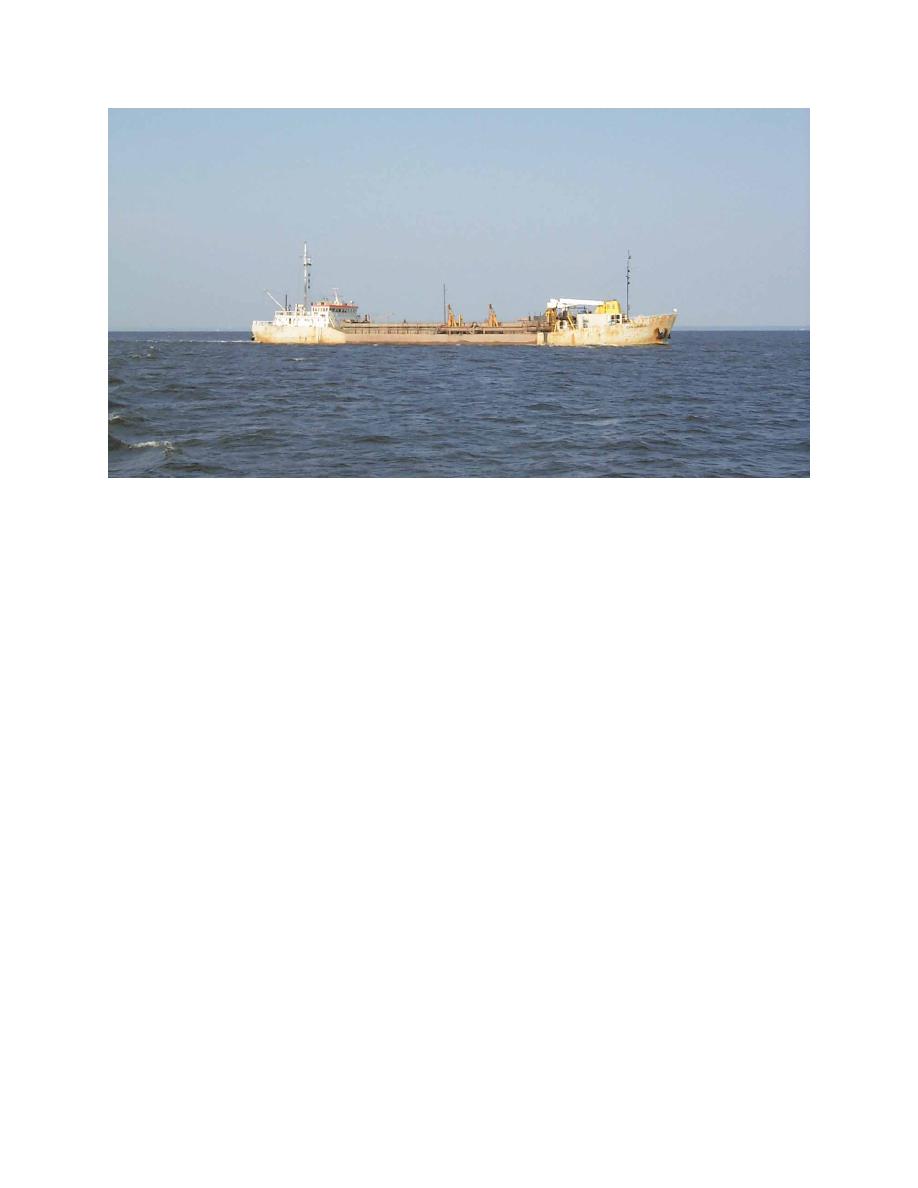 |
||
|
|
||
| |||||||||||||||
|
|
 The ullage sensors were mounted over the hopper and as close to
the vessel center line as possible, with one located forward and one
aft. Specified accuracy of this sensor is 0.25 percent of range with
no temperature gradient. Because the speed of sound in air changes
with air temperature variation, the sensor compensates for tempera-
ture changes. Calibration of the ullage sensors is confirmed by
manually measuring the distance from the hopper ullage datum
down to the dredged material surface and comparing these values
with the sensor/computer-calculated ullage value (which incorpo-
rates the sensor offset elevation). The Columbus has ullage sensors
that work in a similar fashion but use pulsed radar waves instead.
Draft Sensors. The sensor that measures the McFarland's draft
is a strain gauge-type pressure transducer (draft transducer) that
was integrated into the existing pneumatic "bubbler" system used
to measure draft (Figure 6). The McFarland uses a single bubbler
line that runs from the keel (located near the center of the vessel
and hopper area) up to the bridge and operates by maintaining a constant low flow of air in the line
that purges or "bubbles" out the line at the keel. The dredge Columbus has fore and aft draft sensors
that measure pressure as well. The draft transducer calibration is confirmed by comparing
sensor/computer-generated draft output with visual sightings of the hull draft markings of the vessel.
DATA COLLECTION AND ANALYSIS
Columbus Data Collection and Analysis System. The SI for hopper dredges is a system
that monitors dredge position and dredge state, computes TDS, and reports and manages the data
|
|
Privacy Statement - Press Release - Copyright Information. - Contact Us - Support Integrated Publishing |